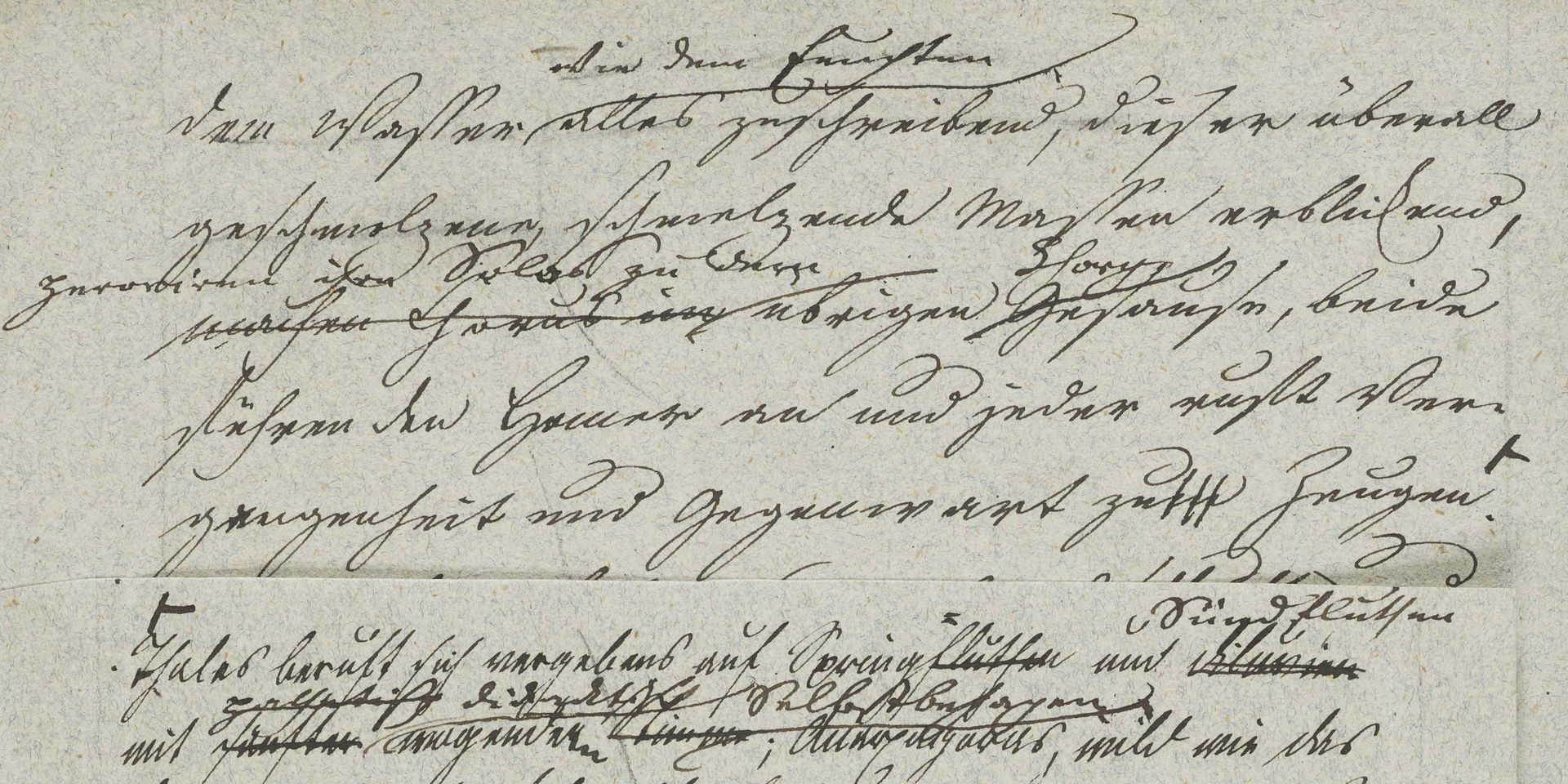Projects of the Klassik Stiftung Weimar are funded by the European Regional Development Fund (ERDF) and the Free State of Thuringia, represented by the State Chancellery of Thuringia, Department of Culture and the Arts.


An exhibition of rarely displayed manuscripts on Goethe’s “Faust” sheds light on its literary origins and the poet’s working method.
In addition to Goethe’s literary estate – listed on the UNESCO Memory of the World register – the Goethe- und Schiller-Archiv also owns most of the poet’s manuscripts of Faust I and Faust II. Among the many unpublished texts and fragments in its possession, the archive’s collection includes the so-called “Urfaust” and the posthumously published Faust II.
The exhibition “The Faust Experiment” features selected pieces from this treasure trove of documents. They offer insights into Goethe’s creative process as he developed the work and illustrate how he remained both occupied and challenged by the subject matter for most of his life. He returned to the text again and again, tweaked and honed it, kept individual passages and tossed others away. The presentation includes rarely shown Faust manuscripts, such as sketches, diagrams, rough drafts penned on various media and clean copies pieced together using a montage technique.
Opens: 30 April 2025
Is open today
Free entry